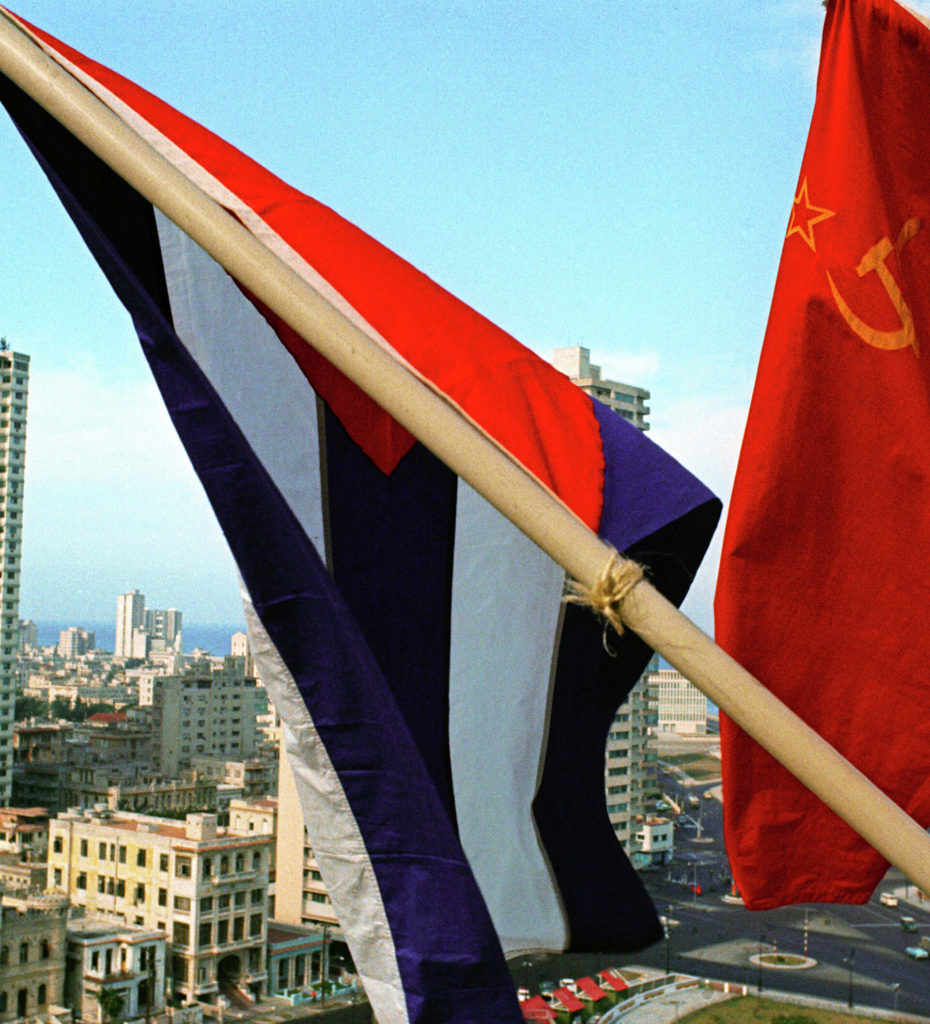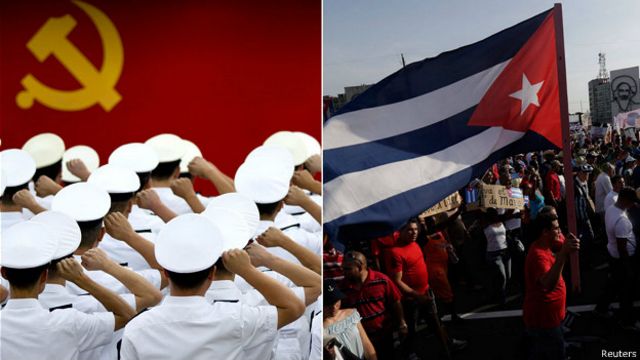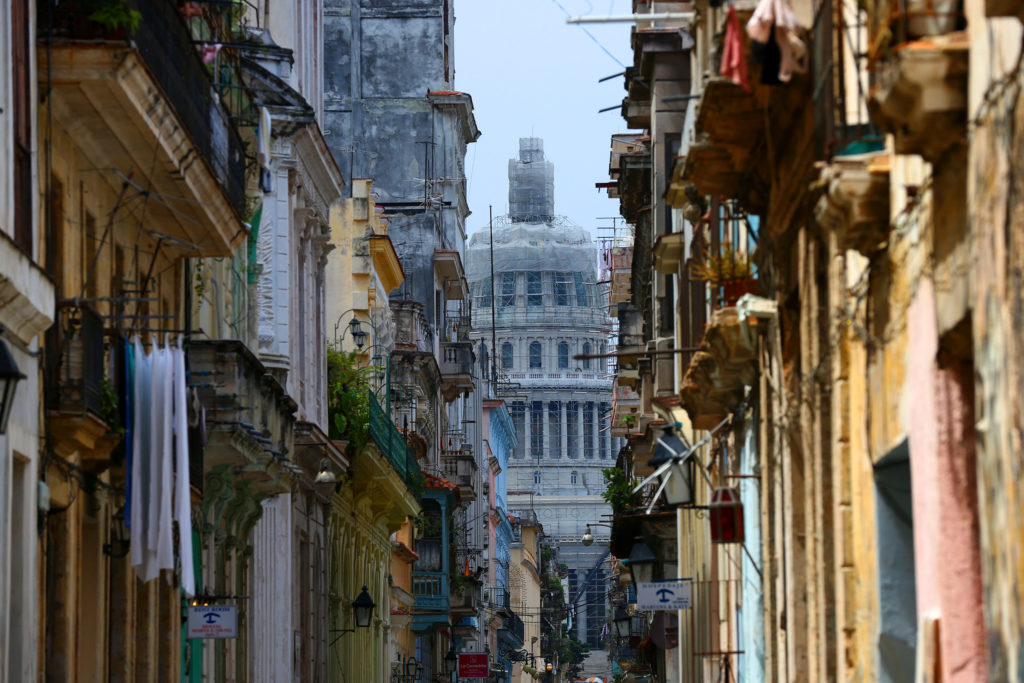CUBA’S DEPENDENCY ON THE OLD SOVIET UNION (TODAY RUSSIA), WHAT REMAINED ON THE ISLAND
Moscow is 9,550 km from Havana, but over 30 years that distance seemed insignificant.
Cuba and the Soviet Union were united by a bond ideological and military. The economy of the island was subsidized by what was called “the selfless help” from the “Soviet brothers,” as they used to say by the official media.
Since the early 1960s began arriving in Cuba Soviet advisors and their families, supervise joint projects between Havana and Moscow. They worked in ministries, factories, or any area of science and technology which wanted to develop in Cuba.
In 1991, following the collapse of the USSR, the Soviets left the island but were leaving Cuba with a severe and sudden economic crisis. In two years the PIB fell 35% causing the deepest economic crisis in the history of the island. But also left its impact in other areas of life “Cuba’s Periodo Especial”.
In over 30 years of that break, look for some of the most significant remaining Soviet tracks on the island.
RELATIONS OF CUBA AND THE USSR.
Until early 1990, it is estimated that total lived in Cuba some 18,000 Soviet military advisers, without a figure not known exactly. It is estimated that between 100,000 and 300,000 Cubans received college scholarships and professional training in the USSR. They studied military careers, scientific and technical as geology, mining, or degrees in Planning and History, Social Sciences and Philosophy. These Cubans not only saw snow for the first time, they all learned Russian and many returned married, bringing not only the Russian language but also culture and Soviet traditions.
CULTURAL IMPACT
For years, Spanish translations made by Soviet Mir publishers, Raduga and Progress, were the greatest literary source, as well as popular Russian magazine Sputnik, Misha, and Moscow News.
Books like “A real man” by Boris Polevoi, or the Anton Chekhov classic, still populate the shelves of Cuban homes.
“In 20 years of the Soviet era, I do not think there have been significant traces in the literature. Even those literary works influenced by socialist realism now considered minor works”, the cultural official Fernando Rojas assured.
In the teaching of classical music, there is also a clear footprint in theater and acting techniques. Also, it was the Soviets who created the Circus School of Cuba.
“The Soviet film also left a clear imprint in Cuban cinema. Films like ‘Moscow Does Not Believe in Tears’ and ‘The Battleship Potemkin’ were shown over and over again on TV and weeks of Soviet cinema was always a popular success,” said Zoia Barash, researcher of Ukrainian origin, in a discussion of the journal “Topics”.
DEVELOPMENT MODEL
In economic terms, the Soviet Union was the theoretical reference and development model that was Cuba. Cuban socialism was thought of as a model similar to that of the USSR, from the ideological point of view, political and economic. This concept had to be redesigned after the fall of the socialist camp. ” That’s another impact of the Soviets in Cuba but also of its collapse. Cuba had to change its development model and its paradigms ” says Juan Triana, director of the Center for the Study of the Cuban Economy.
IMPACT ON TEACHING
Some teaching methods used today in Cuba are the same that were copied from the socialist camp.
In the teaching of history, for example, “is evident in the passion for the event, so commemorative ceremony so that had to do with the relationship with the Soviet Union,” says cultural officer Fernando Rojas.
Moreover, Soviet pedagogy inherited monocausal explanations of historical events where the productive forces and production relations were the key historical events unique.
Also how to teach social sciences, psychology, sociology, and political economy studies are still very marked by Soviet thinking.
BUREAUCRACY
“The bureaucratic expressions of political and institutional activity in Cuba does have to do with a Soviet footprint “. ” Also dogmatism and cultural vision closed, although these are tracks that are in retreat,” says the BBC the vice minister of culture Fernando Rojas.
The secrecy endemic Cuban officials and businesses are often listed as one of the Negative lags Soviet model.
“And the politics of verticality is one of the worst tracks left the Soviet presence here,” he said in a debate of the journal Topics Yoss writer.
It is known that the vast majority of the Soviets who lived in Cuba fled to the island after the collapse of the USSR.
MOTOR CARRIER
In the Cuban streets clear a trail of market relations in the socialist camp. Cars that are more abundant in Cuba Soviet Moskvichs therefore, Volgas, Ladas and Nivas and Ural motorcycles and trucks Kamaz.
Air transport is also mostly Russian. The state airline Cubana has sailed, for decades, the world’s skies with planes, and even the Soviet fleet is mostly Russian.
Sentiment towards the Soviet cars is mixed. For some, they are strong and durable cars. For others is unsafe and old technology.
“The Lada is like a tank. This has 1 million kilometers and still not been repaired the engine,” one driver told the BBC.
“Today it is estimated that live on the island about 6,000 former Soviet telling their descendants, from the 15 Soviet republics,” he told BBC Fryjenkoc Ruslan Reyes, principal coordinator Russian-speaking community and their descendants in Cuba. He is a “warm” or “polovinka” as popularly known in Cuba to the children of mixed marriages, mostly between Russian and Cuban. “I have Russian and Cuban soul at a time,” he says Ruslan told the BBC. “In my house, we cultivate the traditions of the two countries.”
MOST RECENT FOOTPRINTS
The bright golden domes of the Russian Orthodox Church in Havana glow under the hot sun of August in the tropics. This is not a Soviet legacy but a new Russian acquisition.
“Whenever I missed a temple-like this, but in times of socialism, atheism was imposed on us and we could not talk about religion,” he tells the BBC Olga, a Russian who has more than 30 years in Cuba.
Since opening in 2008, the Orthodox Church receives mostly Russian tourists.
In an interview with the BBC, the Consul General of the Russian Federation in Cuba, Zurab Peradze, said Russian tourism to Cuba, before the pandemia, had increased at a rapid pace in recent years.
LA DEPENDENCIA DE CUBA DE LA VIEJA UNIÓN SOVIÉTICA (AHORA RUSIA), LO QUE QUEDÓ EN LA ISLA
Moscú está a 9.550 km de La Habana, pero a lo largo de mas de 30 años esa distancia parecía insignificante.
Cuba y la Unión Soviética estaban unidas por un vínculo ideológico y militar. La economía de la isla fue subsidiada por lo que se llamó “la ayuda desinteresada” de los “hermanos soviéticos”, como solían decir los medios oficiales.
Desde principios de la década de 1960 comenzaron a llegar a Cuba asesores soviéticos y sus familias, supervisan proyectos conjuntos entre La Habana y Moscú. Trabajaron en ministerios, fábricas o cualquier área de la ciencia y la tecnología que quisieran desarrollarse en Cuba.
En 1991, tras el colapso de la URSS, los soviéticos abandonaron la isla pero abandonaron Cuba con una grave y repentina crisis económica. En dos años el PIB cayó un 35% provocando la crisis económica más profunda de la historia de la isla. Pero también dejó su impacto en otros ámbitos de la vida “El Periodo Especial de Cuba”.
En más de 30 años de esa ruptura, busque algunas de las pistas soviéticas más importantes que quedan en la isla.
RELACIONES DE CUBA Y LA URSS.
Hasta principios de 1990, se estima que en total vivían en Cuba unos 18.000 asesores militares soviéticos, sin una cifra que no se conoce con exactitud. Se estima que entre 100.000 y 300.000 cubanos recibieron becas universitarias y formación profesional en la URSS. Estudiaron carreras militares, científicas y técnicas como geología, minería, o licenciaturas en Planificación e Historia, Ciencias Sociales y Filosofía. Estos cubanos no solo vieron la nieve por primera vez, todos aprendieron ruso y muchos regresaron casados, trayendo no solo el idioma ruso sino también la cultura y las tradiciones soviéticas.
IMPACTO CULTURAL
Durante años, las traducciones al español realizadas por las editoriales soviéticas de Mir, Raduga y Progress, fueron la mayor fuente literaria, así como la popular revista rusa Sputnik, Misha y Moscow News.
Libros como “Un hombre de verdad” de Boris Polevoi, o el clásico de Anton Chéjov, aún pueblan las estanterías de los hogares cubanos.
“En los 20 años de la era soviética, no creo que haya habido huellas significativas en la literatura. Incluso aquellas obras literarias influenciadas por el realismo socialista ahora consideradas obras menores”, aseguró el funcionario cultural Fernando Rojas.
En la enseñanza de la música clásica, también hay una clara huella en el teatro y las técnicas de actuación. Además, fueron los soviéticos quienes crearon la Escuela de Circo de Cuba.
“La película soviética también dejó una clara huella en el cine cubano. Películas como ‘Moscú no cree en las lágrimas’ y ‘El acorazado Potemkin’ se proyectaron una y otra vez en la televisión y semanas de cine soviético siempre fueron un éxito popular”, dijo. Zoia Barash, investigadora de origen ucraniano, en un debate de la revista “Topics”.
MODELO DE DESARROLLO
En términos económicos, la Unión Soviética fue el referente teórico y modelo de desarrollo que fue Cuba. El socialismo cubano fue pensado como un modelo similar al de la URSS, desde el punto de vista ideológico, político y económico. Este concepto tuvo que ser rediseñado después de la caída del campo socialista. “Ese es otro impacto de los soviéticos en Cuba pero también de su colapso. Cuba tuvo que cambiar su modelo de desarrollo y sus paradigmas”, dice Juan Triana, director del Centro de Estudios de la Economía Cubana.
IMPACTO EN LA ENSEÑANZA
Algunos métodos de enseñanza que se utilizan hoy en Cuba son los mismos que se copiaron del campo socialista.
En la enseñanza de la historia, por ejemplo, “se nota en la pasión por el evento, tan ceremonia conmemorativa que tenía que ver con la relación con la Unión Soviética”, dice el funcionario cultural Fernando Rojas.
Además, la pedagogía soviética heredó explicaciones monocausales de eventos históricos donde las fuerzas productivas y las relaciones de producción fueron los eventos históricos clave únicos.
Además, la forma de enseñar ciencias sociales, psicología, sociología y economía política sigue estando muy marcada por el pensamiento soviético.
BUROCRACIA
“Las expresiones burocráticas de la actividad política e institucional en Cuba sí tienen que ver con una huella soviética”. También cerró el dogmatismo y la visión cultural, aunque estas son pistas que están en retirada ”, dice a la BBC el viceministro de Cultura Fernando Rojas.
El secreto endémico de los funcionarios y las empresas cubanas a menudo se enumeran como uno de los rezagos negativos del modelo soviético.
“Y la política de la verticalidad es una de las peores huellas que dejó la presencia soviética aquí”, dijo en un debate del escritor Topics Yoss.
Se sabe que la gran mayoría de los soviéticos que vivían en Cuba huyeron a la isla tras el colapso de la URSS.
PORTADOR DE MOTOR
En las calles cubanas se deja un rastro de relaciones de mercado en el campo socialista. Autos que son más abundantes en Cuba Moskvichs soviéticos, por tanto, Volgas, Ladas y Nivas y motocicletas Ural y camiones Kamaz.
El transporte aéreo también es mayoritariamente ruso. La aerolínea estatal Cubana ha surcado, durante décadas, los cielos del mundo con aviones, e incluso la flota soviética es mayoritariamente rusa.
El sentimiento hacia los coches soviéticos es mixto. Para algunos, son autos fuertes y duraderos. Para otros, la tecnología es insegura y antigua.
“El Lada es como un tanque. Este tiene 1 millón de kilómetros y aún no se ha reparado el motor”, dijo un conductor a la BBC.
“Hoy se estima que viven en la isla unos 6.000 ex soviéticos contando a sus descendientes, de las 15 repúblicas soviéticas”, dijo a la BBC Fryjenkoc Ruslan Reyes, coordinador principal de la comunidad de habla rusa y sus descendientes en Cuba. Es un “cálido” o “polovinka” como popularmente lo conocen en Cuba los hijos de matrimonios mixtos, en su mayoría entre rusos y cubanos. “Tengo alma rusa y cubana a la vez”, dice Ruslan a la BBC. “En mi casa cultivamos las tradiciones de los dos países”.
HUELLAS MÁS RECIENTES
Las brillantes cúpulas doradas de la Iglesia Ortodoxa Rusa en La Habana brillan bajo el ardiente sol de agosto en los trópicos. Este no es un legado soviético, sino una nueva adquisición rusa.
“Siempre que me perdía un templo -como este, pero en tiempos de socialismo, nos imponían el ateísmo y no podíamos hablar de religión”, le dice a la BBC Olga, una rusa que lleva más de 30 años en Cuba.
Desde su apertura en 2008, la Iglesia Ortodoxa recibe principalmente a turistas rusos.
En una entrevista con la BBC, el cónsul general de la Federación de Rusia en Cuba, Zurab Peradze, dijo que el turismo ruso a Cuba, antes de la pandemia, había aumentado a un ritmo vertiginoso en los últimos años.
Agencies/ BBC/ Excerpts/ Extractos/ Internet Photos/ Arnoldo Varona/ www.TheCubanHistory.com
THE CUBAN HISTORY, HOLLYWOOD.














